If the only way I can get out and play at the moment is to revisit old haunts, then so be it. Four years ago, I stumbled across a church with some wonderful stories and a fantastic tomb…

In the tiny church of St Bartholomew at Blore Bay, there are secrets. Some are easily discovered, if you read the signs. A tell-tale lumpiness beneath the carpeting of an aisle revealed 15th century brasses commemorating William Bassett II and his wife Joan.

A glass case contains a set of ornately embossed medieval tiles about which little is known. They were found within the other Bassett tomb that occupies a side chapel, separated from the main body of the church by a carved wooden screen. Perhaps it was once a Lady Chapel, but these days it is entirely occupied by a single tomb. It was when the tomb was dismantled for cleaning and conservation in 1995 that the tiles were found as rubble within the central structure. There are three patterns and although the supposition is that they once formed the floor of the little chapel and perhaps the north aisle, no-one knows their origin.

The tomb itself is enormous and almost completely fills the tiny chapel, leaving barely enough room around it as a walkway and certainly no vantage point from which to take a decent photo. Made of alabaster, it would once have been gilded and painted after the manner of the times. It holds life-sized portrait statues of members of the Bassett family who once lived at Blore Hall and from whom the Queen is descended.

There were a number of burials in the vault beneath the tomb. The central figure upon the raised bier is Sir William Bassett himself. To his left is his wife, Judith, to his right is Henry Howard, son on the Earl of Suffolk and husband to William and Judith’s daughter Elizabeth who kneels behind her husband. Their daughter, also Elizabeth Howard, kneels behind her grandmother. At the foot of the tomb are two small monuments to a stillborn and a young child. The Howard family are the same to whom both Anne Boleyn and Catherine Howard were related who would both become ill-fated queens of Henry VIII, destined for the headsman’s block.

Sir William Bassett, and his daughter Elizabeth
Sir William, who was the sheriff of Derbyshire, died at Blore in 1601. It was his wife, Judith, who commissioned the grandiose tomb in the style of Queen Elizabeth I’s own monument at Westminster. Now, tombs in themselves hold little fascination for me aside from their undoubted artistry, the historical value of the accurate details of dress and their ability to put a human face on history. Sir William’s, tomb, though, has other stories to tell.

Elizabeth, William’s daughter
Quite apart from the fact that the effigy of Elizabeth’s first husband, Henry Howard, third son of the Earl of Suffolk bears an uncanny resemblance to actor T.J.Thyne, it seems odd that her effigy is here when she later married the William Cavendish, 1st Duke of Newcastle-upon-Tyne and went on to bear him ten children. These people were once of the great families who shaped the face of the nation…yet often, little is left of the real people save a record of those actions that touched the wider pages of history.

Henry Howard
But there is one story, a local legend I read a good while ago, long before I realised that it was connected to this sleepy little church and the family buried in the vault beneath the tomb. The vault was robbed in the early 19th century and the coffins, made of lead, were stolen, leading to the sealing of the vault.

Judith, William’s wife
The story goes that Sir William’s skull resurfaced. It is not known when the skull was taken from the tomb, but it may have been during the robbing of the vault for its lead. A servant of a local farming family took the skull to the farm and showed it to the other servants. The mistress of the house was not in the best of health and suddenly became very ill, finally dying of her ailment. The presence of the skull was blamed, as an unquiet presence removed from its grave. The sexton was preparing the mistress’ body for burial and, according to the tale, removing the rings from her fingers, when she made a remarkable recovery, returning ‘from the dead’ to lead a long life in full health. I can only imagine the sexton’s reaction… and hope his removal of her jewels was legitimate!

Elizabeth, William’s granddaughter
The skull was last known to be in the care of an Ashbourne tradesman back in 1903. Since then, it has fallen out of the stories. Why would Sir William have been blamed for the mistress’ illness and apparent death at all? Strange tales always have their birth in truth of some kind… Perhaps it had to do with the type of man Sir William was in life. When his cousin, Thomas Fitzherbert was running for Parliament, Sir William had him arrested for debt and prevented him from taking office. In retaliation, Fitzherbert had Sir William removed from office by presenting Queen Elizabeth I with documents accusing Bassett of cowardice, Catholicism (outlawed at that time), treason…and necromancy. The political and religious aspects might well pass the country-folk by…but you can bet that the rumour of necromancy spread like wildfire through the villages!

Sir William’s epitaph, composed by his daughter’s husband, Sir William Cavendish, later created Duke of Newcastle.







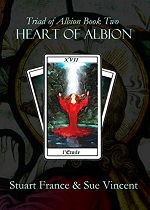









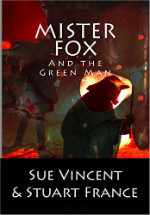





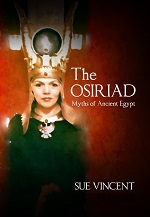










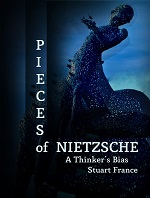
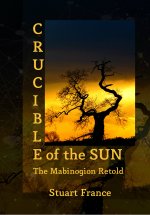


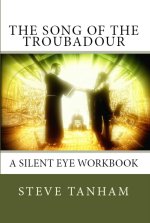


Love those tiles…
LikeLike
Fabulous, aren’t they?
LikeLiked by 1 person
Yes!
LikeLiked by 1 person
What a tortured story! People never change, do they? Power corrupts! And women were for breeding purposes.
LikeLike
I wnder how far human nature has really chanbged over the centuries? Not a lot I imagine…
LikeLike